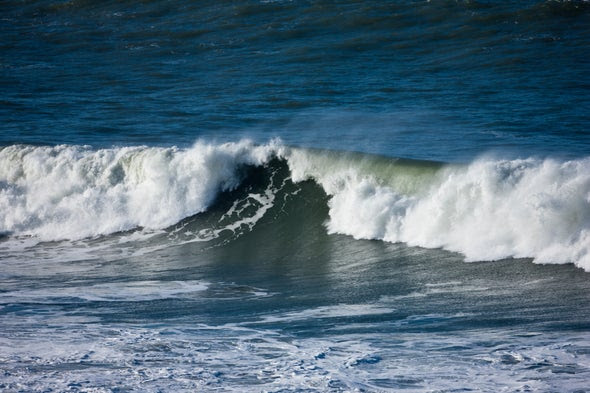Credit: Tim Graham Getty Images
A study by the University of California, Irvine, published in the journal Nature Climate Change on December 22, 2022, shows how the weakening of deep ocean current circulation due to global warming is affecting the capture and sequestration of carbon and nutrients by deep waters.
The ocean current system, consisting of the Atlantic Meridional Overturning Circulation, AMOC, to the north and the Southern Meridional Overturning Circulation, SMOC, to the south, depends primarily on water density. When the southward current carrying warmer water arrives near the seas around Greenland and Svalbard, off Norway, this water becomes colder and saltier and its weight allows it to sink to the depths as it moves southward. T
his process corresponding to the northern extension of the Gulf Stream is called North Atlantic Drift by oceanographers. With global warming, projections predict a weakening of the AMOC due to the influx of freshwater from melting Arctic glaciers that prevents the current from sinking and disrupts the overall functioning of ocean currents.
While the winds will maintain a large-scale ocean circulation, the weakening of the thermohaline circulation will promote a more shallow and less active circulation at depth. Scientists have shown that this slowdown will have an impact on temperatures, and precipitation which will tend to decrease in some parts of the world such as Africa, but also on the ocean’s capacity to store CO2.
As the ocean absorbs less carbon dioxide, the gas will accumulate more easily in the atmosphere, accentuating global warming. The decrease in interactions with the deep ocean will also result in the nutrients used by marine fauna not being brought up efficiently. One of the study’s co-authors, J. Keith Moore, explains that the nutrients that underpin marine ecosystems would be increasingly trapped in the deep ocean, leading to a decline in the biological productivity of the global ocean.
The study also shows that reducing greenhouse gas emissions now can prevent this complete shutdown of the deep circulation. Climate models analyzed by the scientists predict that the slowing of the northern current, the AMOC, and its Southern Hemisphere counterpart, the GCOS, could reach 42% by the end of the century if greenhouse gas emissions continue and could lead to a complete shutdown of the process by 2300. Scientist says this would be a climate catastrophe of similar magnitude to the complete melting of the Earth’s ice caps.



Comment here